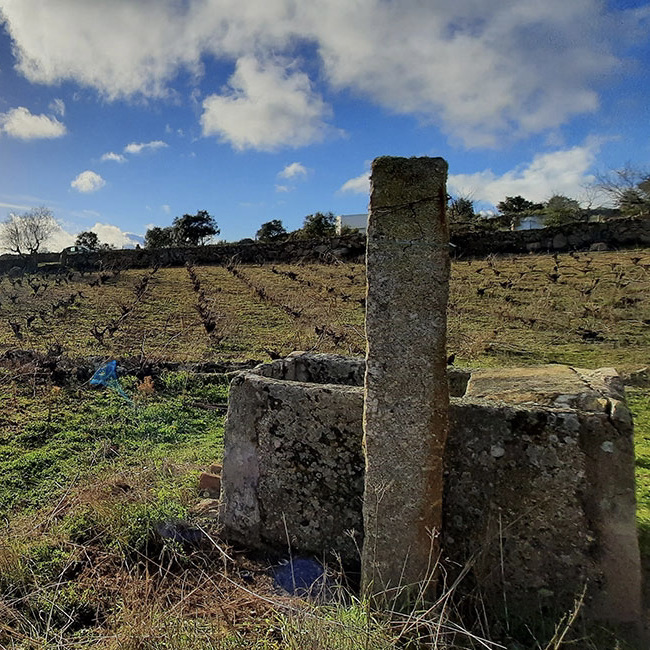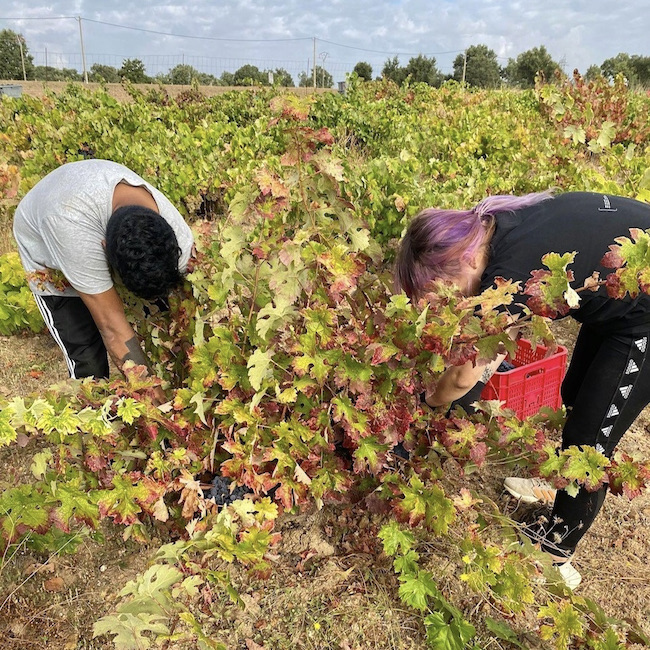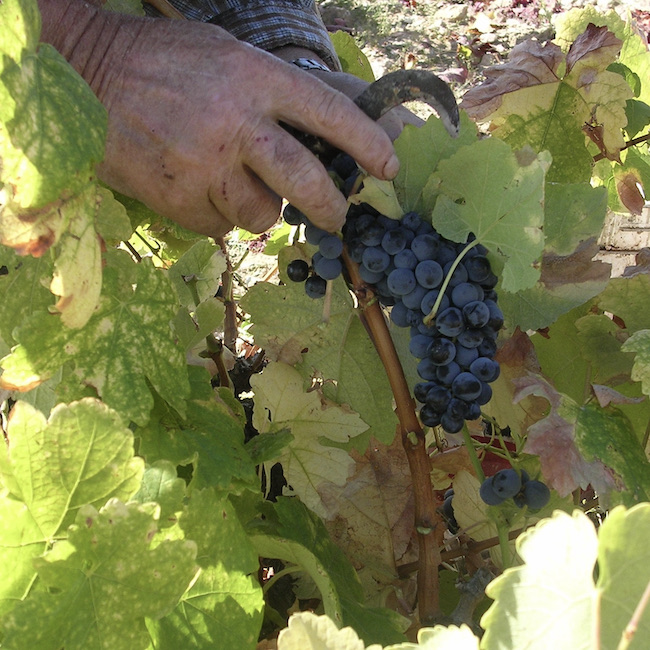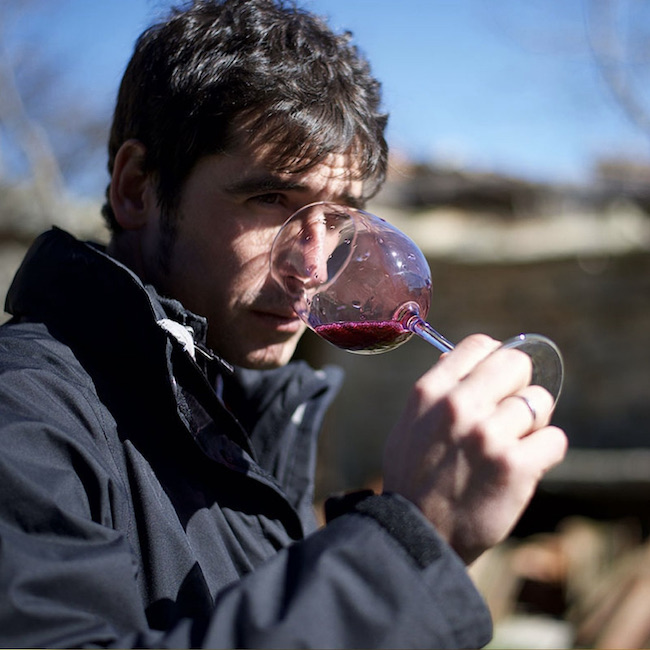by Miguel Crunia - @miguelcrunia
.png.transform/rendition-xs/image_image%20(1).png)
Nestled in one of the largest natural parks in Europe, Arribes del Duero is a very unique and peculiar place where you could, in just a matter of hours, take a stroll between the provinces of Zamora and Salamanca

by Miguel Crunia - @miguelcrunia
On its descent in a straight line towards Portugal, the Duero River will bump into that great granite wall that is Arribes (approximately a 90% of its soil composition). Under this granite there was an intense tectonic activity that formed some veins of slate and schist. This is precisely where the Duero flows, turning South eroding those mineral veins and shaping vertical canyons at its path; creating a cross-border highway with our Iberian neighbour.
Wine has been made here historically since the Middle Ages, but it was during the 19th century when the region experienced a boom increasing the number of plantings. Fermoselle, right in the centre of the region, was the most important town. In its day, it had 5 cooperatives for only 1,200 inhabitants, making a living exclusively from the wine industry. Unfortunately, this viticultural heritage is almost lost. In the 60s, we faced the exodus of an impoverished rural population from the countryside to the big cities.

This is an extremely steep territory that calls for very physically demanding work. The construction of terraces on steep slopes and vertical canyons was necessary in order to avoid landslides, level the soil, and thus be able to plant vines; endowing Arribes’ landscape with great personality. As the population grew in age, vine growing reduced to the gentle slopes or plains as they were far easier to work. That is why viticulture in Arribes is in danger of extinction, plummeting from almost 4,000 ha to only those 280 ha that exist today. Anecdotal.
The differences in orography between canyons, slopes, and plains determine great thermal differences between sub-zones, creating a diverse and complex climate. In general terms, we can classify it as continental with Mediterranean connotations, and a clear Atlantic influence due to its proximity to the Ocean which softens the climate with a relatively high rainfall regime, whose annual rate is above 700 mm.
Today’s structure of the vineyard
Arribes was poor and isolated. Wine was considered food as part of a subsistence economy, and the structure of the vineyards was relied on minifundia. Families owned small plots of land where they planted their vineyards thinking on how they would like their wine to be. The main variety was Juan García (because it was the most productive and they wanted to make sure they could have wine for the whole year) and, from there, they co-planted other varieties (both reds and whites) that could add extra nuances to it.

Understanding this, Arribes could be divided into 3 large sub areas:
The northernmost part of the region was a mining land where workers from Bierzo, Galicia, and Asturias settled. Here the smallholding prevails with a clear Bierzan influence, which is why there is a lot of Mencía and Bastardo planted.
The central area includes some villages within the provinces of Zamora and Salamanca. The vineyard plots are somewhat larger than what we find in the rest of Arribes (larger for what the region is, since we are talking about 1 or 2 ha maximum). There are two realities. One are the cooperatives, which implies that much more monovarietal vineyards were planted; and the other are the small winegrowers, who own smallholdings where the co-plantation is the norm. Every grower played with the same palette of co-planted varieties, but Juan García is the dominant one.
The southern area would come to be only Salamanca, coinciding with the end of the Sierra de Francia. This part is more continental so Rufete and Garnacha gain more weight, with some Bruñal and Juan García planted too. Nowadays we find some cooperatives and family wineries settled here.
The presence of cooperatives made possible to preserve many autochthonous varieties, finding vineyards that are of respectable age and well-valued (There are some centenary vines, and there are wineries where the youngest vines are from the 40s), composing one of the most diverse varietal heritage in the whole Iberian Peninsula. Varieties such as Puesta en Cruz, Doña Blanca, Verdejo, Albillo, and Malvasía Castellana as whites; or Juan García, Bruñal, Gajo Arroba, Rufete, Mencía, Garnacha, Tempranillo, Bastardillo Chico, Bastardillo Serrano, Tinta Jeromo, Verdejo Colorao, Trincadeira, and Mandón as reds.

The nature of Juan García
Juan García is of uncertain origins. Surely it was a pre-phylloxera variety that managed to survive in the shelter of the vertiginous terraces but that also adapted well to flatter areas. It is very productive, resistant to frost, and sensitive to fungal diseases. The wines do not have a high alcohol content, nor do they have high acidity (hence why it is traditionally blended). Despite its skin being thin, it releases color quite quickly and its tannins are quite austere. Its wines are defined by being endowed with rusticity and finesse at the same time, giving intense mature aromas of red wild fruits, mountain flowers, and forest floor. It is earthy and vegetal, and it expresses the mineral nature of its soils incredibly well. The vines are planted in goblet without irrigation which lowers the yield but, being close to the ground it helps the plant to defend better itself against water stress, producing grapes of incredible quality.
A great present, a even brighter future
Wines from Arribes are already great but the perspective is that what the future holds for this region is something even greater. In This is already happening, turning Arribes into a multifaceted DO where different styles of wine coexist thanks to the personal interpretation of the terroir by each winemaker. From traditional wines in which you can taste the “sun" (warm, colored, high ABV), to the new wave of wines that gives less ABV, and are translucid, fluid, vertical, and terroir-driven.

If you would like to start tasting the wines from Arribes, a good place would be the wines crafted by some of the following leading voices: El Hato y el Garabato, Bodegas Frontio, Charlotte Allen, La Setera, and Dominio del Noveno. The region is also attracting reputed names into the area and, even though some of them don’t bottle under the seal of the DO because their cellars are in other regions, they carry and promote the name and quality of Arribes’ wines around the world: Raúl Pérez, Álvar de Dios, Barco del Corneta, and Laura Lorenzo.
We must take advantage of this boom if we do not want all this viticultural heritage to disappear. Arribes has many of the things that the wine market is looking for, especially when it comes to uniqueness and typicity.
Photos: Arribes DO and El Hato y el Garabato